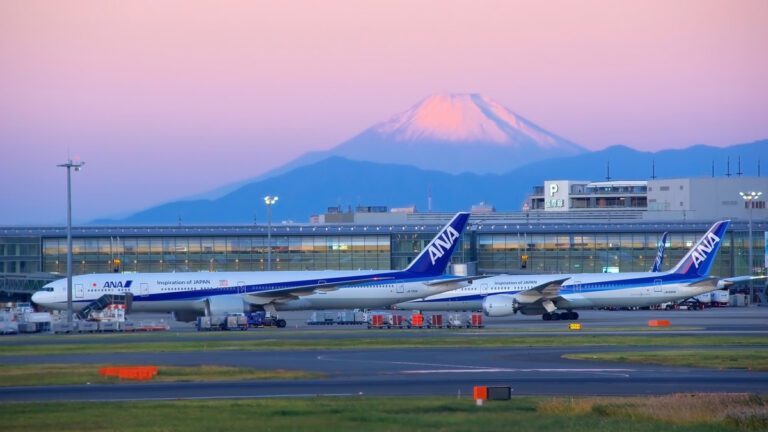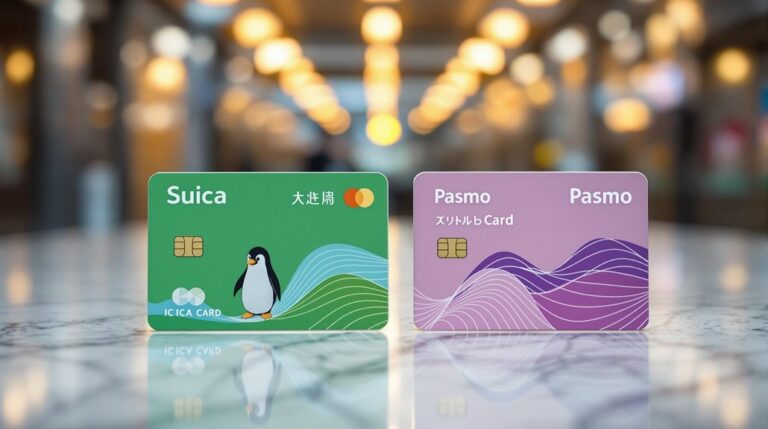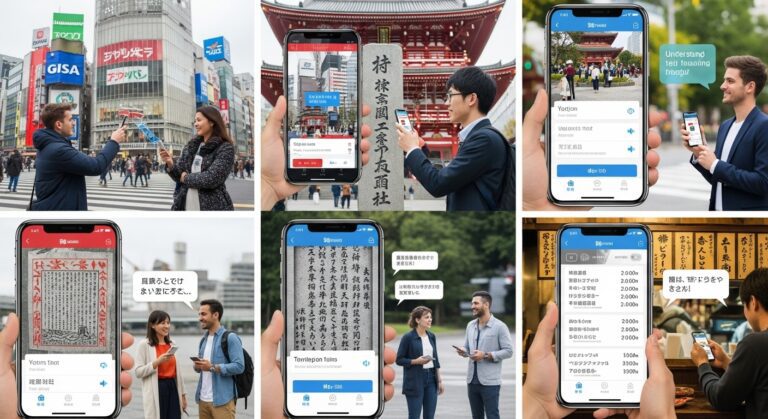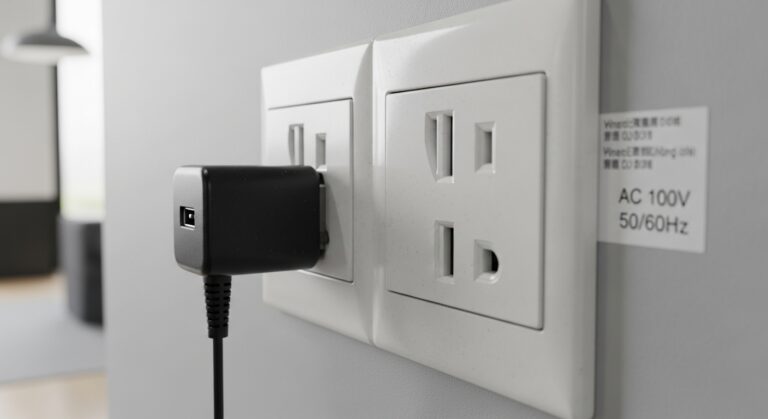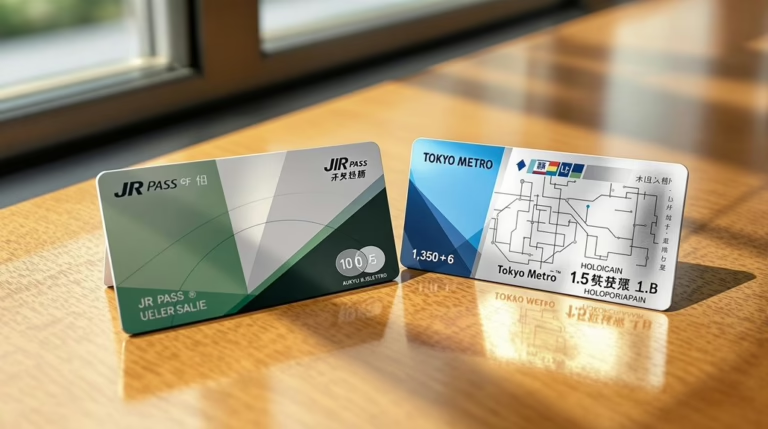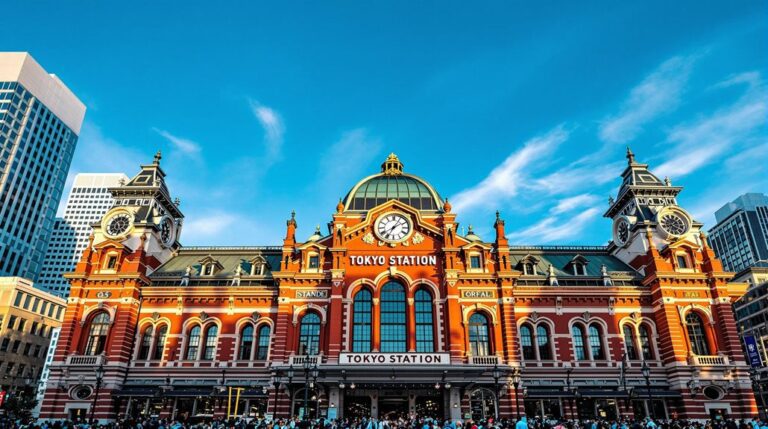Useful Japanese Travel Phrases to Know Before Traveling to Tokyo
Essential Japanese Phrases Every Tokyo Traveler Should Know Before Arrival – Landing in Tokyo without knowing a single Japanese phrase isn’t the end of the world—plenty of travelers manage just fine with hand gestures and translation apps.
But here’s what those guidebooks rarely mention: a few well-placed words in Japanese can transform routine transactions into genuine moments of connection.
Tokyo rewards linguistic effort, however modest, with warmer service, clearer directions, and that intangible feeling of belonging rather than just passing through.
This guide covers essential Japanese phrases categorized by situation—from navigating Shinjuku Station during rush hour to ordering at a standing sushi bar in Tsukiji.
Key Points
Hide🗣️ First-Timer’s Toolkit: Everyday Survival Phrases
The basics are essential.Greetings & Politeness
- KONNICHIWA (こんにちは) kohn-nee-chee-wah – Hello
- OHAYO GOZAIMASU (おはようございます) oh-hai-yoh goh-zai-mahs – Good morning
- ARIGATO GOZAIMASU (ありがとうございます) ah-ree-gah-toh goh-zai-mahs – Thank you (polite)
- SUMIMASEN (すみません) soo-mee-mah-sen – Excuse me / Sorry
Getting Around Tokyo
- TOIRE WA DOKO DESU KA? (トイレはどこですか) toh-ee-reh wah doh-koh dess kah – Where is the restroom?
- EIGO O HANASHIMASU KA? (英語を話しますか?) ey-goh oh ha-na-shee-mahs kah – Do you speak English?
- Eki wa doko desu ka? (駅はどこですか?) eh-kee wah doh-koh dess kah – Where is the station?
Dining & Shopping Basics
- KORE O KUDASAI (これをください) koh-reh oh koo-dah-sai – This one, please
- IKURA DESU KA? (いくらですか?) ee-koo-rah dess kah – How much is this?
- OISHII DESU (おいしいです) oh-ee-sheee dess – It’s delicious!
In Case of Emergency
- TASUKETE KUDASAI (助けてください) tah-soo-keh-teh koo-dah-sai – Please help me!
- BYOUIN WA DOKO DESU KA? (病院はどこですか?) byo-in wah doh-koh dess kah – Where is the hospital?
🏮 For the Seasoned Tokyo Traveler
Once you’ve mastered the basics, level up your Japanese to experience Tokyo more authentically. These phrases add nuance, respect, and a touch of confidence to your interactions.Polite & Everyday Conversations
- GOMEN NASAI (ごめんなさい) goh-men nah-sai – I’m sorry
- DOU ITASHIMASHITE (どういたしまして) doh oo-ee-tah-shee-mah-she-teh – You’re welcome
- HAJIMEMASHITE (はじめまして) hah-jee-meh-mah-shee-teh – Nice to meet you
- DAIJOUBU DESU (大丈夫です) dye-joh-boo dess – It’s okay / I’m fine
Dining Like a Local
- ITADAKIMASU (いただきます) ee-tah-dah-kee-mahs – Said before eating, to show gratitude
- GOCHISOUSAMA DESHITA (ごちそうさまでした) goh-chee-soh-sah-mah deh-shtah – Said after finishing a meal
- OKAIKEI ONEGAISHIMASU (お会計お願いします) oh-kai-kay oh-neh-gai-shee-mahs – Check, please
- KANPAI (乾杯) kahn-pai – Cheers!
Exploring & Asking for Help
- ___ NI IKITAI DESU (___に行きたいです) ___ nee ee-kee-tai dess – I want to go to ___
- KOKO DE TOMETE KUDASAI (ここで止めてください) koh-koh deh toh-meh-teh koo-dah-sai – Please stop here (useful in taxis)
- MOU ICHIDO ITTE KUDASAI (もう一度言ってください) moh itch-ee-doh it-teh koo-dah-sai – Please say that again
💬 Pro Tip: Don’t Fear the Accent
Your accent won’t be perfect — and that’s fine! In fact, Tokyo locals find it charming when foreigners give Japanese a shot. Don’t freeze up. Gesture, smile, and laugh it off. Communication in Japan is as much about respect and tone as vocabulary.Whether this marks a first visit or a return trip, these expressions provide practical tools for smoother travel and deeper cultural engagement.
Understanding Language Expectations in Tokyo
Tokyo exists as a fascinating linguistic paradox.
The city hosts millions of international visitors annually, yet English proficiency remains surprisingly limited outside major tourist zones and international hotels.
Staff at Tokyo Skytree or Senso-ji Temple typically handle basic English requests, but venture into residential neighborhoods like Nakameguro or local izakayas in Koenji, and the linguistic landscape shifts dramatically.
This reality doesn’t reflect unfriendliness—quite the opposite.
Japanese hospitality (omotenashi) runs deep, but the education system historically emphasized reading and writing English over conversational fluency.
Many Tokyoites understand more English than they feel comfortable speaking, creating situations where a simple Japanese phrase breaks through mutual hesitation more effectively than struggling through English.
The cultural dimension matters equally.
Japanese society places tremendous value on effort and respect for local customs.
Attempting even basic phrases signals acknowledgment of these values, often prompting patient assistance and genuine appreciation that transcends the actual words spoken.
Essential Greetings and Politeness Phrases
Here’s the list of Japanese phrases for greetings:
Core Daily Greetings
Mastering basic greetings establishes immediate rapport and demonstrates cultural awareness.
Japanese greetings often include time-specific variations that English lacks.
Ohayou gozaimasu (おはようございます) serves as the standard morning greeting until roughly 10:00 AM.
The casual version, ohayou, works among friends but sounds too informal for service interactions.
Pronounce it oh-hah-yoh goh-zai-mahs with slight emphasis on the second syllable.
Konnichiwa (こんにちは) covers the broad middle of the day, typically from late morning through early evening.
This represents the safest all-purpose greeting for travelers.
Say it kohn-nee-chee-wah, though many native speakers blur it closer to kohn-nee-chee-wa.
Konbanwa (こんばんは) transitions in for evening greetings, generally after sunset or once evening activities begin.
Pronunciation follows as kohn-bahn-wah, useful when entering restaurants for dinner or greeting hotel staff during night shifts.
Oyasumi nasai (おやすみなさい) means “good night” when parting for sleep, though travelers use this less frequently than daytime greetings.
The shortened oyasumi works in casual contexts.
Fundamental Courtesy Expressions
Arigatou gozaimasu (ありがとうございます) ranks as perhaps the most important phrase in any traveler’s vocabulary.
This polite “thank you” applies universally—receiving change at convenience stores, accepting directions from strangers, or acknowledging service at restaurants.
Pronounce it ah-ree-gah-toh goh-zai-mahs with clear separation between syllables.
The ultra-casual arigatou exists but sounds inappropriate in most travel situations.
Sumimasen (すみません) carries remarkable versatility, functioning as “excuse me,” “I’m sorry,” and “thank you” depending on context.
Use it when navigating crowded trains, getting a server’s attention, or apologizing for minor inconveniences.
The pronunciation soo-mee-mah-sen should flow smoothly without harsh breaks.
This phrase sees more daily use than perhaps any other—expect to say it dozens of times.
Gomen nasai (ごめんなさい) represents a more serious apology than sumimasen, appropriate for genuine mistakes rather than minor social navigation.
Pronounce it goh-men nah-sai.
For small bumps or accidental inconveniences, sumimasen remains the better choice.
Onegaishimasu (お願いします) translates roughly as “please” but carries nuanced meaning closer to “I humbly request.” Pair it with gestures when asking for help or add it after requests for maximum politeness.
Say it oh-neh-gai-shee-mahs, often accompanying a slight bow.
Navigation and Transportation Phrases
Here’s the list of useful phrases when you’re exploring the city:
Finding Your Way
Tokyo’s labyrinthine stations and unmarked streets make directional phrases particularly valuable.
Station names receive English signage throughout the metro system, but exits, platforms, and neighborhood directions often require verbal confirmation.
___ wa doko desu ka?
(___はどこですか?) provides the essential “Where is ?” construction.
Insert destinations: Eki (station), toire (restroom), hoteru (hotel), or specific place names.
Pronounce it * wah doh-koh des kah* with rising intonation on the final syllable to indicate questioning.
Kono densha wa ___ ni ikimasu ka?
(この電車は___に行きますか?) asks “Does this train go to ___?” Essential for confirming platform choices at major stations like Tokyo or Shinjuku where multiple lines intersect.
Say it koh-noh den-shah wah ___ nee ee-kee-mahs kah.
Tsugi no eki wa nan desu ka?
(次の駅は何ですか?) means “What is the next station?” Useful when riding local trains where announcements may only occur in Japanese.
Koko de orite kudasai (ここで降りてください) tells taxi drivers “Please let me out here.” The casual version koko de ii desu (here is fine) works equally well.
Pronunciation follows as koh-koh deh oh-ree-teh koo-dah-sai.
Asking for Help
Eigo o hanashimasu ka?
(英語を話しますか?) directly asks “Do you speak English?” Pronounce it ay-goh oh hah-nah-shee-mahs kah.
This phrase often prompts English speakers to reveal themselves or helps identify staff members with language skills at information counters.
Tasukete kudasai (助けてください) means “Please help me” and serves emergency situations or moments of genuine confusion.
Say it tah-soo-keh-teh koo-dah-sai with clear urgency.
For less dire circumstances, sumimasen followed by gestures usually suffices.
Mou ichido itte kudasai (もう一度言ってください) requests “Please say that again.” Particularly useful when receiving rapid-fire directions.
Pronounce it moh ee-chee-doh eet-teh koo-dah-sai.
Pair with yukkuri hanashite kudasai (please speak slowly) when needed.
Restaurant and Food-Related Phrases
Here’s the list of useful Japanese phrases for this purpose:
Ordering and Dining
Japanese dining culture follows specific linguistic rituals that enhance the experience when observed properly.
These phrases demonstrate awareness of customs while facilitating smooth service.
Kore o kudasai (これをください) means “This one, please” and works perfectly when pointing at menu items, display cases, or plastic food models (sampuru) common in restaurant windows.
Pronunciation follows koh-reh oh koo-dah-sai.
This phrase eliminates vocabulary barriers when specific dish names prove challenging.
Osusume wa nan desu ka?
(おすすめは何ですか?) asks “What do you recommend?” at restaurants where menus lack English or pictures.
Say it oh-soo-soo-meh wah nahn des kah.
Servers generally appreciate the trust implied and steer diners toward house specialties.
_____ wa arimasu ka?
(_____はありますか?) inquires “Do you have ?” Insert basic items: mizu (water), biiru (beer), bejitarian (vegetarian options).
Pronounce it * wah ah-ree-mahs kah*.
Ikura desu ka?
(いくらですか?) asks “How much is this?” Useful at markets, street food stalls, or shops without clear pricing.
Say it ee-koo-rah des kah.
Many establishments display prices clearly, but this phrase helps when uncertainty arises.
Mealtime Etiquette
Itadakimasu (いただきます) precedes every meal, expressing gratitude for the food and those who prepared it.
No direct English equivalent exists—something between “thank you for this meal” and “bon appétit.” Pronounce it ee-tah-dah-kee-mahs, often accompanied by hands pressed together briefly.
Saying this at restaurants identifies awareness of Japanese customs and typically earns approving nods.
Gochisousama deshita (ごちそうさまでした) follows meals as a post-dining thank you, literally meaning “it was a feast.” Say it goh-chee-soh-sah-mah deh-shee-tah when leaving restaurants or finishing meals at someone’s home.
This phrase carries significant cultural weight—omitting it marks diners as culturally unaware.
Oishii desu (おいしいです) simply means “It’s delicious.” Pronounce it oh-ee-shee des with genuine enthusiasm.
Chefs and servers appreciate hearing this, particularly at smaller establishments where pride in craft runs deep.
The casual oishii!
works equally well in informal settings.
Okaikei onegaishimasu (お会計お願いします) requests the check, though practice differs from Western norms.
Pronounce it oh-kai-keh oh-neh-gai-shee-mahs.
Many Tokyo restaurants expect payment at the register near the entrance rather than table-side service.
Watch how other diners handle payment before summoning servers unnecessarily.
Kanpai (乾杯) serves as the universal toast before drinking.
Say it kahn-pai with raised glass, waiting until everyone has been served before drinking—jumping ahead breaks etiquette.
This applies equally to beer at izakayas and tea at traditional restaurants.
Shopping and Transaction Phrases
Here’s the list of useful Japanese phrases when shopping or doing transaction:
Making Purchases
Tokyo’s shopping districts range from high-end Ginza department stores to quirky Nakano Broadway vintage shops, each requiring slightly different communication approaches.
Kore o mite mo ii desu ka?
(これを見てもいいですか?) asks “May I look at this?” when items sit behind counters or in locked cases.
Pronounce it koh-reh oh mee-teh moh ee des kah.
Japanese retail culture assumes minimal touching without permission, particularly for valuable items.
Motto ookii/chiisai no wa arimasu ka?
(もっと大きい/小さいのはありますか?) requests larger (ookii) or smaller (chiisai) sizes.
Helpful in clothing stores or when seeking different product dimensions.
Say it moht-toh oh-kee/chee-sai noh wah ah-ree-mahs kah.
Kore dake desu (これだけです) indicates “Just this” when declining additional items at checkout or limiting purchases.
Pronounce it koh-reh dah-keh des.
Kurejitto kaado de onegaishimasu (クレジットカードでお願いします) specifies credit card payment.
While increasingly common in Tokyo, cash remains king at smaller establishments and traditional shops.
The phrase flows as koo-reh-jeet-toh kah-doh deh oh-neh-gai-shee-mahs.
Return and Exchange Situations
Kore o kōkan dekimasu ka?
(これを交換できますか?) asks about exchanges, though Japanese retail policies typically prove stricter than Western standards.
Pronounce it koh-reh oh koh-kahn deh-kee-mahs kah.
Bring receipts and original packaging—returns without defects rarely receive approval.
Emergency and Medical Phrases
Here’s the list of useful Japanese phrases specifically for the emergency and/or medical phrases:
Urgent Situations
Tasukete (助けて) provides the urgent, shortened “Help!” for genuine emergencies.
Say it loudly tah-soo-keh-teh to attract immediate attention.
The polite tasukete kudasai works for less urgent assistance.
Byōin wa doko desu ka?
(病院はどこですか?) asks “Where is the hospital?” Pronounce it byoh-een wah doh-koh des kah.
Tokyo’s medical facilities maintain high standards, though English-speaking staff concentrate at international clinics and major hospitals.
Kusuri ga hitsuyou desu (薬が必要です) states “I need medicine.” Say it koo-soo-ree gah hee-tsoo-yoh des at pharmacies.
Many common medications require prescriptions in Japan that may be over-the-counter elsewhere.
___ arerugii ga arimasu (___アレルギーがあります) declares allergies by inserting allergen names: piinattsu (peanuts), gyūnyū (milk), tamago (eggs), ebi (shrimp).
Essential for those with severe food allergies where cross-contamination poses risks.
Keisatsu o yonde kudasai (警察を呼んでください) requests someone call the police.
Pronounce it kay-saht-soo oh yohn-deh koo-dah-sai.
Tokyo ranks among the world’s safest cities, but knowing this phrase provides security nonetheless.
Advanced Social Phrases
For advance social purposes, here’s the list of useful Japanese phrases you need to know:
Building Rapport
Hajimemashite (はじめまして) means “How do you do?” or “Nice to meet you” during first introductions.
Say it hah-jee-meh-mah-shee-teh, often followed by one’s name and yoroshiku onegaishimasu (よろしくお願いします)—a phrase without direct translation but roughly meaning “pleased to meet you, please treat me favorably.” These formal introductions matter in business contexts but also show cultural sophistication in social situations.
Dō itashimashite (どういたしまして) responds to thanks with “You’re welcome,” pronounced doh ee-tah-shee-mah-shee-teh.
However, many Japanese respond to arigatou with simple acknowledgment rather than this phrase—cultural norms often favor minimizing one’s contribution to help given.
Daijōbu desu (大丈夫です) means “It’s okay” or “I’m fine” with remarkable versatility.
Use it dai-joh-boo des when declining offers politely, confirming one’s wellbeing, or accepting minor inconveniences.
The phrase can also indicate understanding or agreement depending on context and tone.
Showing Cultural Awareness
Shitsurei shimasu (失礼します) literally means “I will be rude” but functions as a polite announcement when entering rooms, interrupting conversations, or leaving gatherings.
Pronounce it shee-tsoo-ray shee-mahs.
This phrase demonstrates awareness of Japanese spatial etiquette where announcing one’s presence shows respect.
Moushiwake gozaimasen (申し訳ございません) provides the deepest level of apology, reserved for serious mistakes or professional contexts.
Say it moh-shee-wah-keh goh-zai-mah-sen when situations warrant more gravity than casual sumimasen.
Osewa ni narimashita (お世話になりました) expresses gratitude for someone’s care or assistance over time, commonly said when leaving hotels or thanking guides.
The phrase flows as oh-seh-wah nee nah-ree-mah-shee-tah and carries deeper meaning than simple arigatou, acknowledging ongoing relationship rather than single transaction.
Practical Pronunciation Tips
Japanese pronunciation follows more consistent patterns than English, making it relatively accessible to learners.
Five vowel sounds remain constant: a (ah), i (ee), u (oo), e (eh), o (oh).
Unlike English, these never shift—a always sounds like “father,” never like “cat” or “ate.”
Consonants generally match English equivalents with key exceptions.
The Japanese r falls somewhere between English “r” and “l,” produced by tapping the tongue lightly against the alveolar ridge.
The tsu combination, as in tsukiji, creates a single sound rather than “t-s-u” separately.
Double consonants (tt, pp, kk) require brief pauses before pronunciation—kitte (stamp) versus kite (came) changes meaning based on that pause.
Similarly, long vowel marks (ō, ū) indicate extended duration that affects meaning: obasan (aunt) versus obaasan (grandmother).
Stress patterns differ fundamentally from English.
Japanese uses pitch accent rather than stress accent, meaning syllables rise and fall in pitch rather than volume.
For travelers, maintaining relatively even emphasis across syllables produces more natural-sounding Japanese than applying English stress patterns.
Context and body language matter tremendously in Japanese communication.
A hesitant sumimasen with confused expression communicates need for help as effectively as perfect pronunciation.
Likewise, gestures toward maps or menu items combined with basic phrases often clarifies intentions better than struggling through complex sentences.
Common Mistakes to Avoid When Communicating
Mixing up arigatou and sumimasen represents a frequent error.
While sumimasen can express gratitude in certain contexts (thanking someone for trouble taken), arigatou remains the direct thanks.
Overusing sumimasen for everything marks speakers as overly apologetic.
Forgetting question particles changes statements into questions incorrectly.
The ka particle at sentence end transforms declarations into questions—wakarimasen (I don’t understand) versus wakarimasu ka?
(Do you understand?).
Missing this particle leads to confusing interactions.
Over-casualizing in formal contexts causes subtle offense.
Using arigatou instead of arigatou gozaimasu at hotels or restaurants sounds too familiar.
When uncertain about formality levels, default to polite forms—overcorrecting toward politeness rarely offends, while inappropriate casualness can.
Attempting complex sentences often produces confusion worse than simple phrases.
Stick to straightforward constructions rather than translating elaborate English thoughts directly into Japanese.
“Station where?” communicates more effectively than mangled attempts at proper sentence structure.
Creating Your Personal Phrase Toolkit
Building confidence with Japanese phrases before arrival pays substantial dividends.
Focus initial efforts on five categories: greetings (konnichiwa, arigatou gozaimasu), navigation (doko desu ka?), food (kore o kudasai, itadakimasu), shopping (ikura desu ka?), and emergencies (tasukete kudasai).
Practice pronunciation using language apps or YouTube videos featuring native speakers.
Audio resources reveal nuances written guides cannot convey—pitch patterns, rhythm, and natural flow that distinguish comprehensible from awkward phrasing.
Create physical or digital flashcards for situations likely to arise: ordering coffee, asking for directions, expressing dietary restrictions.
Organize by context rather than alphabetically—grouping restaurant phrases together builds applicable knowledge faster than random vocabulary lists.
Many travelers find success combining phrases with supporting gestures or phone displays.
Saying eki wa doko desu ka?
while showing a map application creates redundancy that overcomes pronunciation imperfections.
Screenshots of destination names in Japanese script provide visual backup when verbal communication falters.
Accept imperfection as part of the process.
Native Japanese speakers understand travelers face linguistic challenges and demonstrate remarkable patience with earnest attempts.
A mispronounced arigatou delivered with genuine appreciation communicates far more effectively than perfect silence.
Regional and Generational Variations
Tokyo Japanese, while considered standard, contains subtle differences from Kansai dialect (Osaka, Kyoto) or regional variations across Japan.
These differences remain minimal enough that learning standard Tokyo phrases serves travelers well throughout the city.
Generational gaps create more noticeable variation.
Younger Tokyoites, particularly those in international-facing roles, demonstrate greater English comfort and flexibility with casual Japanese.
Older generations and those in traditional roles maintain stricter formality expectations.
When uncertain, err toward formal expressions—younger people accept polite speech easily while older individuals may find casual language disrespectful.
English loanwords (katakana) permeate modern Tokyo Japanese, particularly in fashion, technology, and food contexts: konbini (convenience store), resutoran (restaurant), hoteru (hotel).
These borrowed words follow Japanese pronunciation patterns—”hotel” becomes hoteru with distinct syllable separation.
Learning common loanwords expands functional vocabulary quickly since English speakers already know the concepts.
Technology as Linguistic Support
Translation apps provide valuable backup but shouldn’t replace basic phrase knowledge.
Google Translate’s camera function reads Japanese text in real-time, useful for menus, signs, and instructions.
However, apps produce awkward or incorrect translations frequently enough that relying solely on technology creates problems.
Voice translation tools handle simple exchanges reasonably well but struggle with context, formality levels, and rapid speech.
Use them as supplementary resources when phrase knowledge proves insufficient, but don’t abandon human interaction entirely in favor of screen-mediated communication.
Offline language apps like Japanese by Renzo or simple phrase book apps provide functionality when WiFi proves elusive.
Download essential phrases before arrival—assuming constant connectivity in subway stations or remote neighborhoods leads to frustrating situations.
Putting Language Skills into Cultural Context
Language represents only one dimension of Japanese cultural etiquette.
Bowing accompanies many phrases—slight nods with arigatou gozaimasu, deeper bows for moushiwake gozaimasen.
These physical gestures reinforce verbal communication and demonstrate cultural awareness.
Volume matters significantly.
Japanese conversation typically occurs at lower volumes than Western norms, particularly in public spaces.
Speaking phrases at conversational level rather than projecting shows respect for shared spaces and cultural communication patterns.
Physical contact norms differ substantially.
Avoid touching shoulders, patting arms, or other casual contact common in Western cultures while communicating.
Maintain respectful distance and use verbal phrases rather than physical gestures when possible.
Gift-giving language carries particular importance.
When presenting omiyage (souvenirs) or gifts, use tsumaranai mono desu ga (this is a trifling thing, but…) to show humility.
This self-deprecating phrase follows cultural patterns even when giving expensive or thoughtful items.
The Broader Impact of Language Effort
Making linguistic efforts in Tokyo extends beyond practical communication into meaningful cultural exchange.
Japanese society values ganbaru—the spirit of persevering and doing one’s best.
Attempting Japanese phrases embodies this principle, earning respect regardless of pronunciation quality or grammatical accuracy.
These efforts frequently transform standard service interactions into memorable moments.
Hotel staff light up when guests say ohayou gozaimasu at breakfast.
Shopkeepers offer extra assistance when browsers attempt kore o mite mo ii desu ka?
Restaurant chefs sometimes provide complimentary dishes when diners properly use itadakimasu and gochisousama deshita.
Language attempts also open doors to local experiences tourists otherwise miss.
An izakaya regular might recommend hidden menu items after hearing respectable Japanese.
Neighborhood shop owners engage more warmly with customers who greet them properly.
While Tokyo accommodates non-Japanese speakers adequately, the city reveals deeper layers to those making linguistic efforts.
Preparing for Linguistic Challenges
Despite preparation, communication gaps inevitably arise.
Accepting this reality reduces frustration when linguistic skills prove insufficient for complex situations.
Tokyo offers numerous resources for travelers facing language barriers: police boxes (koban) often have English-speaking officers, major hotels provide multilingual concierge services, and tourist information centers throughout the city staff English speakers.
Tourist-heavy areas like Shibuya, Harajuku, and Asakusa feature more English signage and bilingual assistance than residential neighborhoods.
When planning challenging interactions—medical appointments, complex purchases, restaurant reservations—consider choosing locations with established international clientele.
Learning to recognize written characters provides unexpected benefits.
Understanding 男 (men) and 女 (women) prevents restroom mix-ups.
Recognizing 口 (entrance/exit) helps navigate stations.
Numbers in both Arabic and kanji appear throughout the city—familiarity with both systems aids tremendously.
Final Thoughts on Language and Travel
Tokyo rewards travelers who approach linguistic challenges with openness and humility.
Perfect Japanese isn’t the goal—respectful effort is.
These phrases provide tools for smoother navigation, richer cultural engagement, and meaningful human connection across language barriers.
The difference between tourists who learn basic phrases and those who don’t often appears subtle—a warmer smile from a shopkeeper, clearer directions from a stranger, faster service at busy restaurants.
These small improvements compound across days and weeks, transforming good trips into exceptional ones.
Japanese language learning needn’t end with the trip.
Many travelers discover genuine interest in the language after experiencing its practical and cultural dimensions firsthand.
Tokyo visits often spark longer linguistic journeys—a pattern that enriches both subsequent travel and broader cultural understanding.
Which phrase will you master first for your Tokyo adventure?


